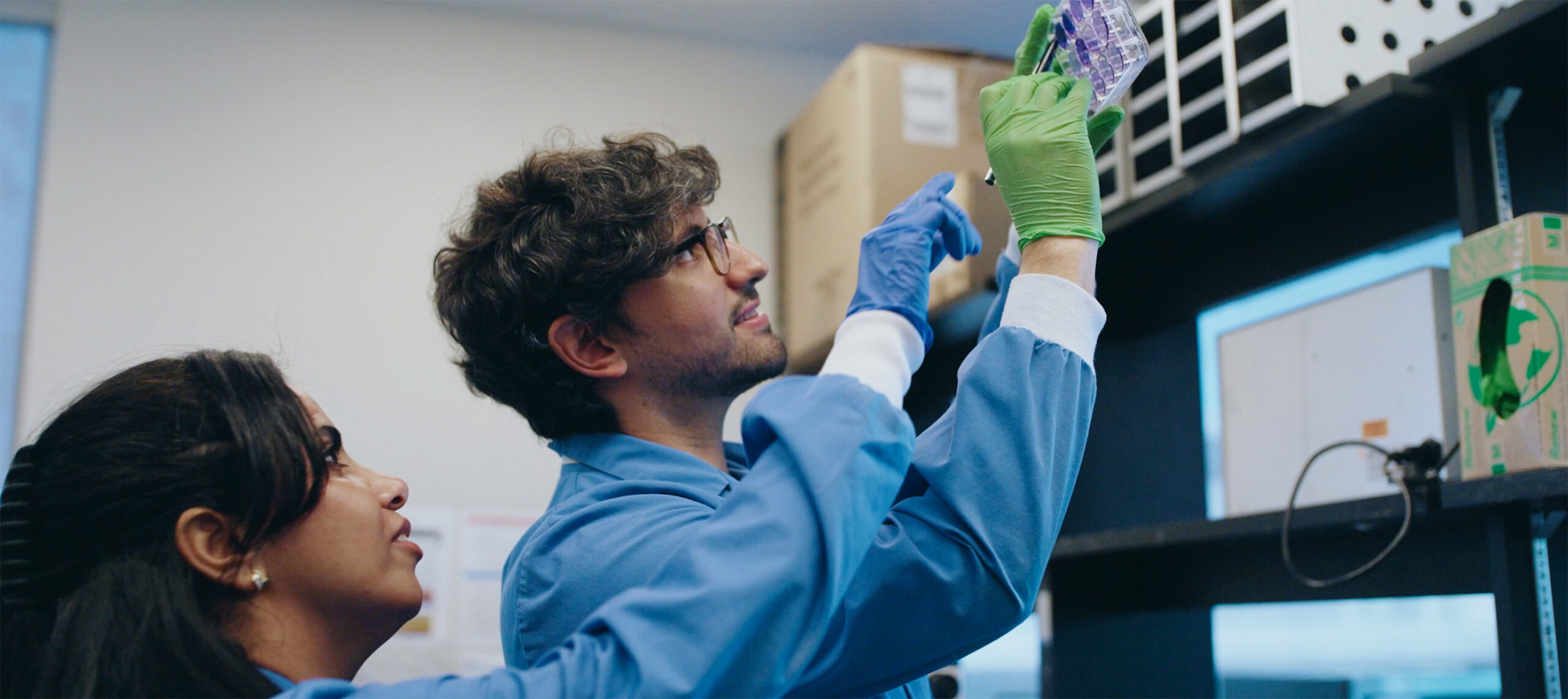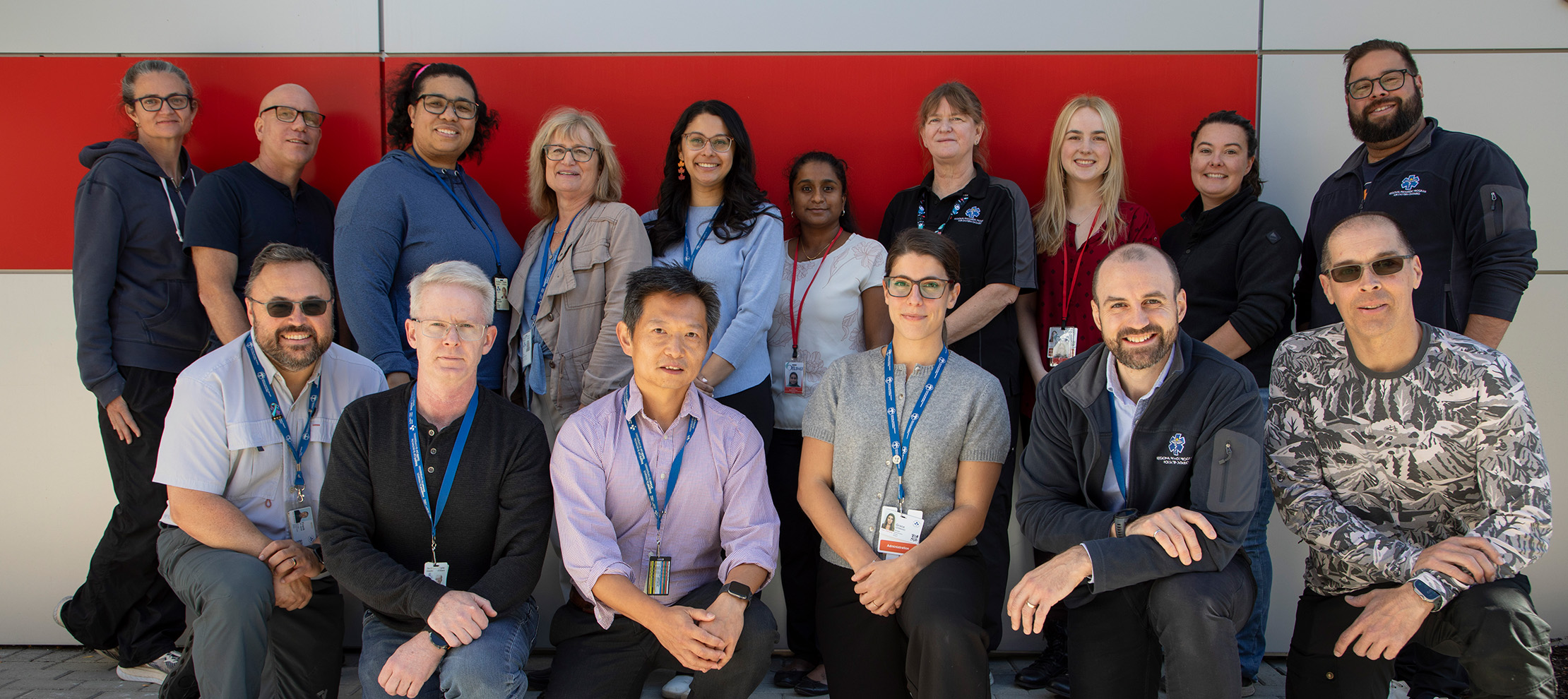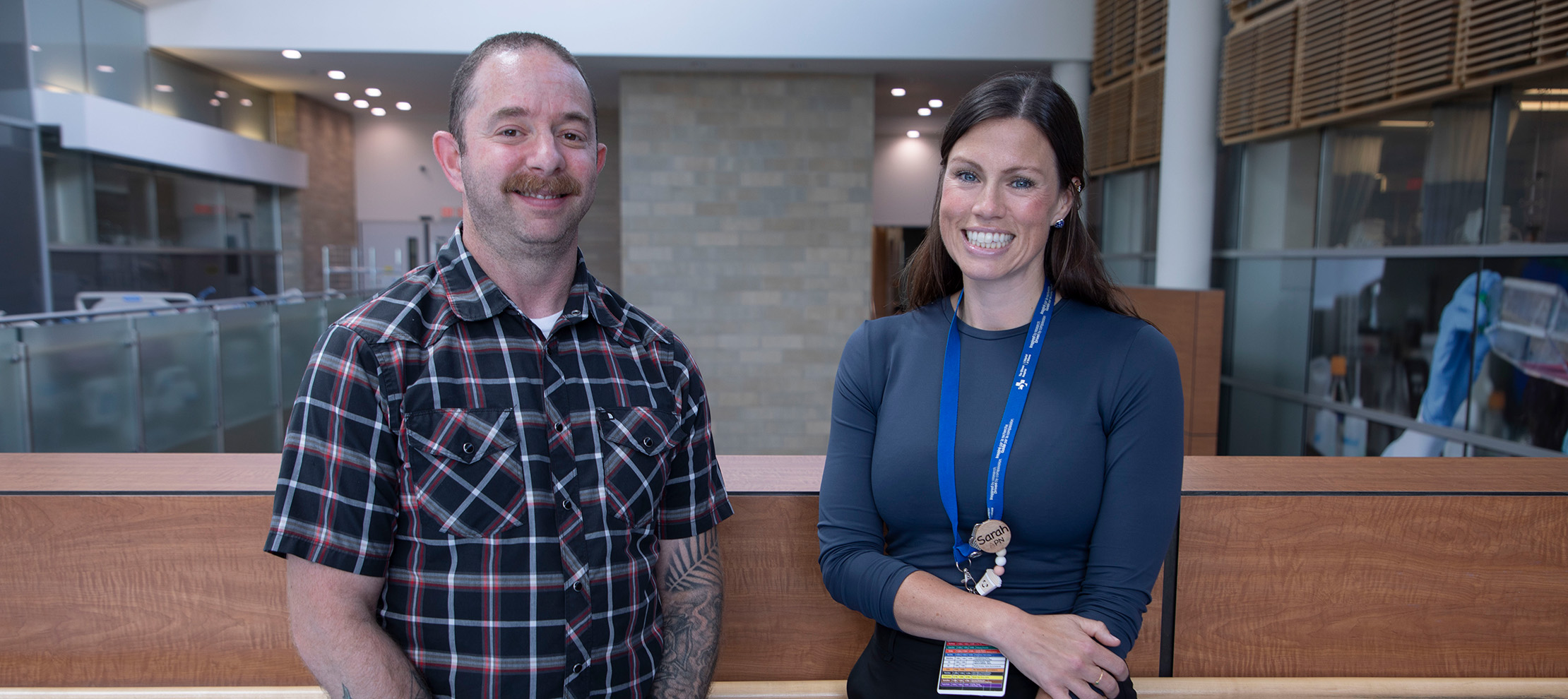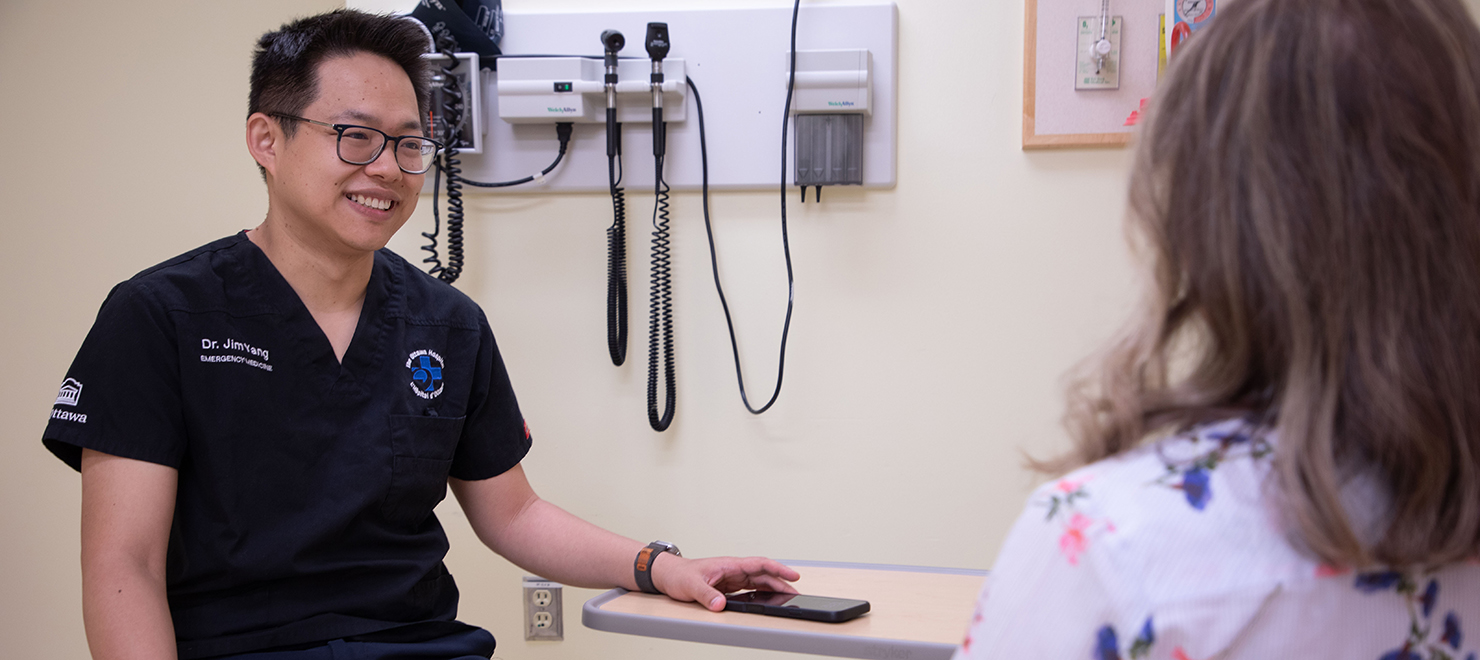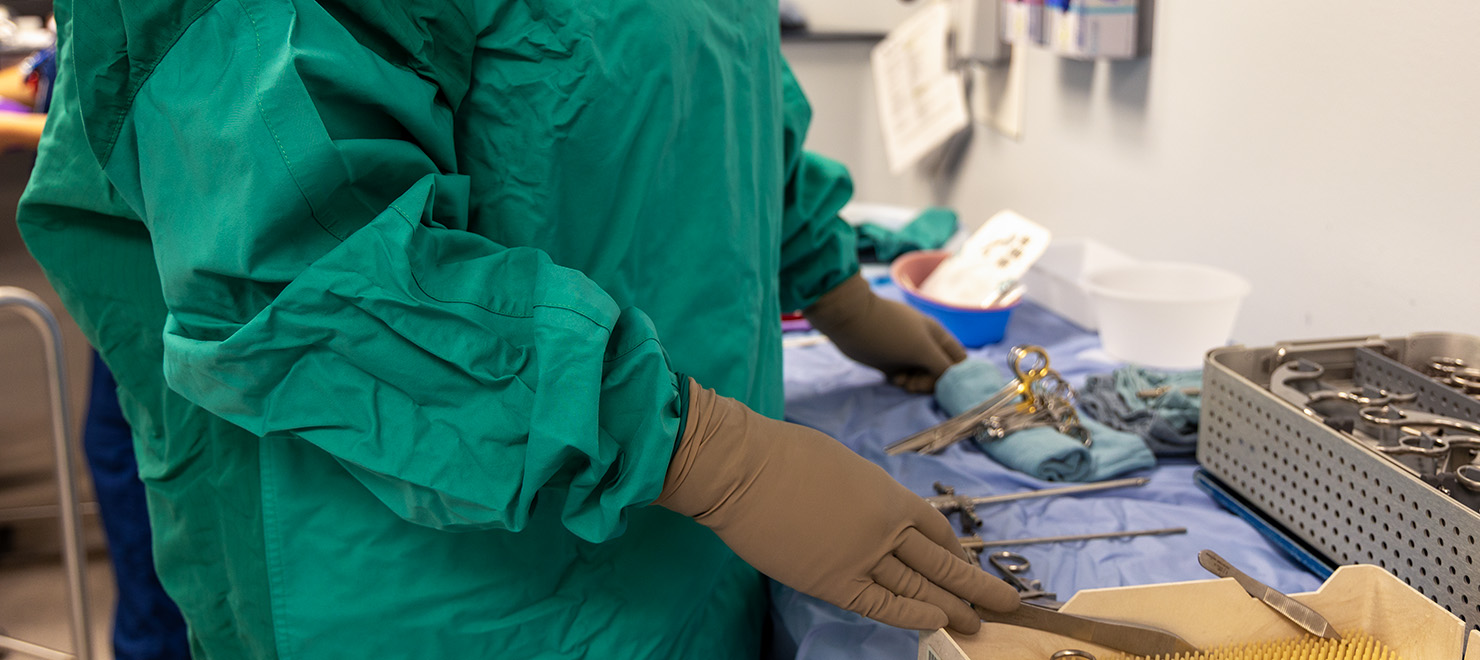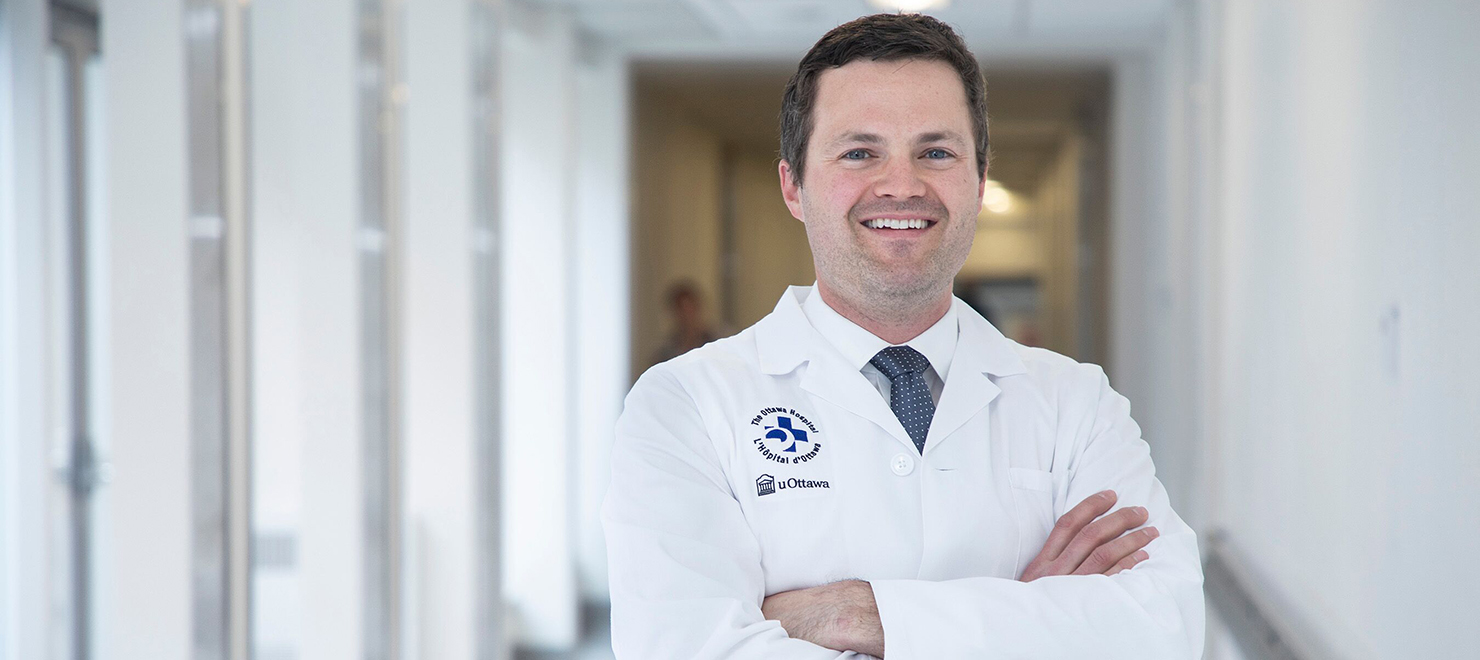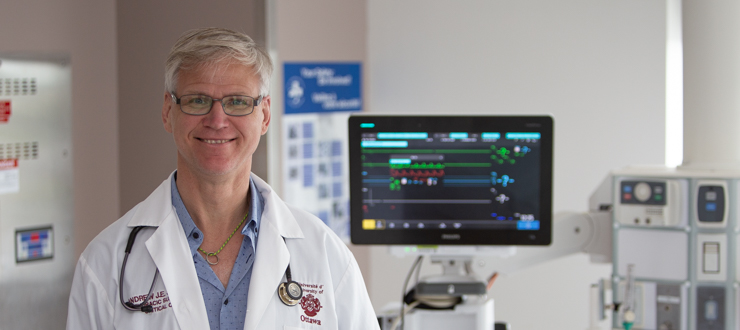
Dr. Andrew Seely developed the innovative device, which he believes will help improve patient care.
The Ottawa Hospital is the first hospital in the world to evaluate an innovative medical device that uses artificial intelligence (AI) to predict when critically ill patients are ready to breathe on their own, called the Extubation Advisor. The device was developed by Dr. Andrew Seely, a critical care physician, thoracic surgeon and scientist at The Ottawa Hospital and founder and CEO of Therapeutic Monitoring Systems (TMS).
A medical first
Over the last two years of the pandemic, more Canadians than ever have experienced extreme difficulty breathing, requiring mechanical ventilation (intubation) in critical care units across the country. According to the Ontario Science Table, at the peak of wave three, the number of patients on ventilators was more than 180 percent of pre-pandemic historical averages, and the recovery is not easy.
A mechanical ventilator is a machine that helps patients breathe when they cannot breathe on their own due to critical illness, such as COVID-19, or surgery. The machine is connected to a breathing tube that is inserted into the patient’s trachea. The process of intubating (inserting the tube) and extubating (removing the tube) is very complex, and anyone requiring ventilation will require months of recovery and rehabilitation to learn how to swallow, eat, talk and breathe again. Currently, there is no patient monitoring equipment to help physicians decide the best time to remove a patient from a ventilator to improve their outcomes, but Dr. Seely and his team are well on their way to changing that.
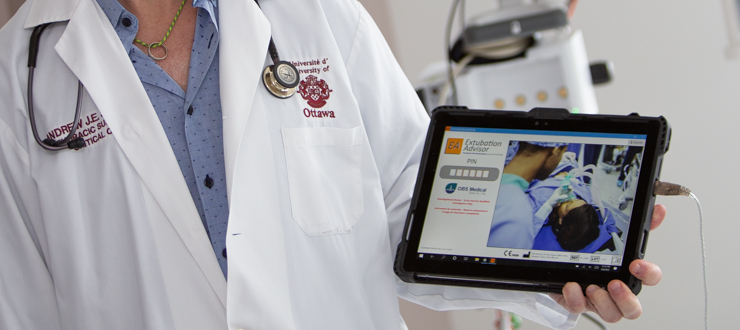
Over the last 13 years, Dr. Seely and his colleagues have made major progress in using complex mathematics, artificial intelligence and routinely collected vital sign data to predict when patients are ready to be extubated. Dr. Seely founded TMS in 2007 to further develop the research and bring it closer to helping patients. In 2019, TMS partnered with manufacturer OBS Medical to bring their design and concept to life, and this year, the system was used for three months at the bedside of ventilated patients in The Ottawa Hospital’s Intensive Care Unit (ICU), with permission from their families.
A step in the right direction
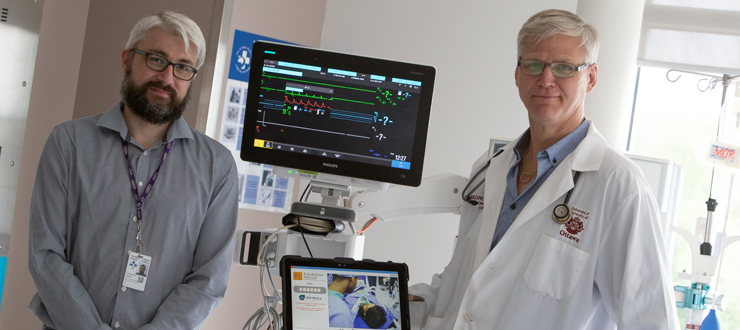
“Currently, one in every seven ICU patients experiences extubation failure. Prolonged ventilation harms patients, and early extubation requiring reintubation can be a devastating blow to their recovery,” says Dr. Seely, who is also a professor at the University of Ottawa. “We’ve developed the first medical device to offer extubation decision support, which we believe will help standardize and improve care.”
The device constantly monitors and analyzes a patient’s vital signs, including blood pressure, oxygen levels, breathing rhythms and heart rate during their ventilation. Then, it uses AI to provide doctors with a specific read of when the patient can be safely removed from the ventilator. This is the first time that real-time predictive analytics based on this type of high-frequency data is being used and evaluated at the bedside.
Dr. Seely and his team hope this tool will help improve patient safety and outcomes in the near future. After the successful three-month initial evaluation at The Ottawa Hospital, the metrics are looking promising, and the feedback received from physicians was very positive.
“What Dr. Seely and TMS are doing is revolutionary. It’s the future of medicine,” says Dr. Kwadwo Kyeremanteng, Department Head of Critical Care at The Ottawa Hospital. “This kind of technology will allow us to make more informed decisions that are precise and patient centered. This will allow for better outcomes and improved resource use. Honestly, this is groundbreaking research.”
Dr. Seely and his team’s next steps include a randomized controlled trial. With each milestone, they are one step closer to transforming care for some of the sickest patients treated at hospitals.
“Although there is still work to be done to evaluate clinical impact, this first-time bedside implementation is a step in the right direction of transforming routine monitoring into improved care,” says Dr. Seely. “We are grateful to our partners, collaborators, consenting patients and research team who are enabling this innovation.”
All researchers at The Ottawa Hospital follow a Responsible Innovation framework for developing and commercializing innovations in a responsible way.

Support patient care and research at
The Ottawa Hospital
You might also like…
Everyone at our hospital plays a role in research. Here’s how
It’s Research Week at The Ottawa Hospital. Check out this video to hear from some of the incredible people fuelling our discoveries that are having an impact around the world.
How we’re helping over 1,400 paramedics enhance patient care and safety
The Regional Paramedic Program for Eastern Ontario (RPPEO) is on a mission to enhance what happens after you dial 911. Here are three new ways this team is helping paramedics deliver better, safer care to their patients.
New program fills gap in care for teens and young adults with cancer
For young people, a cancer diagnosis can disrupt their education, careers, relationships and family-building goals. Our Adolescent and Young Adult (AYA) Cancer Program supports AYAs on their cancer journey, complementing the care provided by their care team.
Less time charting means more time with patients: How The Ottawa Hospital is using AI to support patient care
“I’m seeing and treating more patients.” Find out how DAX Copilot, a powerful AI assistant, is helping our physicians cut down on paperwork, improve their own well-being and spend more time with patients.
New reusable surgical gowns a step towards greener operating rooms
The Ottawa Hospital is finding safe, innovative ways to reduce medical waste in its operating rooms by using more environmentally sustainable products.
Do you have a surgery coming up? Here are five “prehab” tips to help you recover faster
You’ve probably heard about rehabilitation, but what about “prehabilitation”? Prehab is all about getting your body and mind in top shape before surgery so you can enjoy a smoother, quicker recovery. Discover five essential prehab strategies from researcher Dr. Daniel McIsaac.


 To reset, hold the Ctrl key, then press 0.
To reset, hold the Ctrl key, then press 0.
